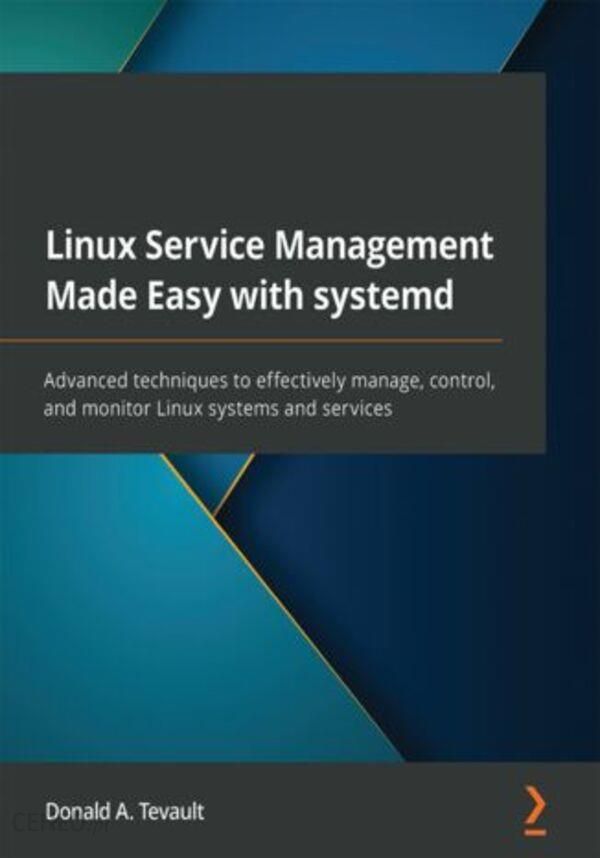Description
Linux Service Management Made Easy with systemd will provide you with an in-depth understanding of systemd, so that you can set up your servers securely and efficiently.This is a comprehensive guide for Linux administrators that will help you get the best of systemd, starting with an explanation of the fundamentals of systemd management.Youll also learn how to edit and create your own systemd units, which will be particularly helpful if you need to create custom services or timers and add features or security to an existing service.Next, youll find out how to analyze and fix boot-up challenges and set system parameters. An overview of cgroups thatll help you control system resource usage for both processes and users will also be covered, alongside a practical demonstration on how cgroups are structured, spotting the differences between cgroups Version 1 and 2, and how to set resource limits on both.Finally, youll learn about the systemd way of performing time-keeping, networking, logging, and login management. Youll discover how to configure servers accurately and gather system information to analyze system security and performance.By the end of this Linux book, youll be able to efficiently manage all aspects of a server running the systemd init system.Spis treści:Linux Service Management Made Easy with systemdContributorsAbout the authorAbout the reviewerPrefaceWho this book is forWhat this book coversTo get the most out of this bookDownload the example code filesCode in ActionDownload the color imagesConventions usedGet in touchShare Your ThoughtsSection 1: Using systemdChapter 1: Understanding the Need for systemdTechnical requirementsThe history of Linux init systemsThe shortcomings of SysV Init and upstartThe advantages of systemdsystemds simplicitysystemds consistencysystemds performancesystemd securityThe systemd controversySummaryQuestionsAnswersFurther readingChapter 2: Understanding systemd Directories and FilesTechnical requirementsUnderstanding the systemd configuration filesUnderstanding the systemd unit filesTypes of unit filesUnderstanding the systemd executablesSummaryQuestionsAnswersFurther readingChapter 3: Understanding Service, Path, and Socket UnitsTechnical requirementsUnderstanding service unitsUnderstanding the Apache service fileUnderstanding the Secure Shell service fileUnderstanding the timesyncd service fileUnderstanding socket unitsUnderstanding path unitsSummaryQuestionsAnswersFurther readingChapter 4: Controlling systemd ServicesTechnical requirementsVerifying the status of a serviceStarting, stopping, and reloading servicesEnabling and disabling servicesKilling a serviceMasking a serviceSummaryQuestionsAnswersFurther readingChapter 5: Creating and Editing ServicesTechnical requirementsEditing an existing serviceCreating a partial edit to the [Install] sectionCreating a partial edit to the [Service] sectionCreating a full editCreating a new serviceChanging the default systemd editorCreating a new container service with podmanSummaryQuestionsAnswersFurther readingChapter 6: Understanding systemd TargetsTechnical requirementsUnderstanding the purpose of systemd targetsUnderstanding the structure of a target fileUnderstanding the sockets.target fileUnderstanding dependencies in the sshd.service fileComparing systemd targets to SysVinit runlevelsUnderstanding target dependenciesChanging the default targetTemporarily changing the targetSummaryQuestionsAnswersFurther readingChapter 7: Understanding systemd TimersTechnical requirementsComparing systemd timers with cronViewing timer informationUnderstanding timer optionsUnderstanding monotonic timersUnderstanding real-time timersUnderstanding calendar events for real-time timersCreating timersCreating a system-level timerCreating a user-level timerSummaryQuestionsAnswersFurther readingChapter 8: Understanding the systemd Boot ProcessTechnical requirementsComparing SysV bootup and systemd bootupUnderstanding SysV and systemd bootup similaritiesUnderstanding the SysV bootup processUnderstanding the systemd bootup processAnalyzing bootup performanceSome differences on Ubuntu Server 20.04Understanding systemd generatorsUnderstanding mount unitsUnderstanding backward compatibilitySummaryQuestionsAnswersFurther readingChapter 9: Setting System ParametersTechnical requirementsSetting the locale parameterUnderstanding the localeChanging the default locale on the Alma machineChanging the default locale on UbuntuSetting time and timezone parametersSetting the hostname and machine informationViewing the informationSetting the informationSummaryQuestionsAnswersFurther readingChapter 10: Understanding Shutdown and Reboot CommandsTechnical requirementsShutting down with systemctlHalting with systemctlRebooting with systemctlUsing shutdown instead of systemctlRunning a job before shutting downSummaryQuestionsAnswersFurther readingSection 2: Understanding cgroupsChapter 11: Understanding cgroups Version 1Technical requirementsUnderstanding the history of cgroupsUnderstanding the purpose of cgroupsUnderstanding the structure of cgroups Version 1Understanding the cgroup filesystemSummaryQuestionsAnswersFurther readingChapter 12: Controlling Resource Usage with cgroups Version 1Technical requirementsUnderstanding resource controllersExamining the resource controllersPreparing for the demosControlling CPU usageControlling Vickys CPU usageControlling CPU usage for a serviceControlling memory usageControlling blkio usageSetting a blkio limit for VickySetting a blkio limit for a serviceUnderstanding pam_limits and ulimitThe ulimit commandThe pam_limits moduleSummaryQuestionsAnswersFurther readingChapter 13: Understanding cgroup Version 2Technical requirementsUnderstanding the need for Version 2Version 1 complexityVersion 1 attribute filenamesNo support for rootless containersUnderstanding the improvements in cgroup Version 2Setting resource limits on rootless containersUnderstanding cpusetConverting RHEL 8-type distros to cgroup version 2SummaryQuestionsAnswersFurther readingSection 3: Logging, Timekeeping, Networking, and BootingChapter 14: Using journaldTechnical requirementsUnderstanding the pros and cons of rsyslogUnderstanding the pros and cons of journaldUnderstanding journald on UbuntuUnderstanding journald on RHEL-type systemsUsing journalctlSearching for and viewing log data with journalctlSealing journald log files for securitySetting up remote logging with journaldSummaryQuestionsAnswersFurther readingChapter 15: Using systemd-networkd and systemd-resolvedTechnical requirementsUnderstanding networkd and resolvedUnderstanding Netplan on UbuntuViewing installer-generated Netplan configurationsCreating Netplan configurationsUnderstanding networkd and resolved on RHEL-type machinesUsing networkctl and resolvectlViewing the networkd and resolved unit filesSummaryQuestionsAnswersFurther readingChapter 16: Understanding Timekeeping with systemdTechnical requirementsUnderstanding the importance of accurate timeComparing NTP implementationsUnderstanding chrony on the AlmaLinux machineThe chronyd.service fileThe chrony.conf fileSetting up a chronyd time serverUsing chronycUnderstanding systemd-timesyncdThe systemd-timesyncd.service fileThe timesyncd.conf fileUsing timedatectlConfiguring Ubuntu to use chronyUnderstanding the Precision Time ProtocolAn overview of PTPInstalling PTPConfiguring PTP with software timestamping on AlmaLinuxConfiguring PTP with hardware timestamping on AlmaLinuxConfiguring PTP with software timestamping on UbuntuConfiguring PTP with hardware timestamping on UbuntuSummaryQuestionsAnswersFurther readingChapter 17: Understanding systemd and BootloadersTechnical requirementsUnderstanding the basic computer architectureUnderstanding GRUB2Comparing GRUB2 on BIOS and EFI/UEFI systemsGRUB2 on BIOS-based and EFI/UEFI-based Ubuntu machinesUnderstanding systemd-bootUnderstanding Secure BootSummaryQuestionsAnswersFurther readingChapter 18: Understanding systemd-logindTechnical requirementsUnderstanding the need for a new login serviceUnderstanding systemd-logind.serviceThe Alma Linux systemd-logind.service fileThe Ubuntu Server systemd-logind.service fileUnderstanding logind.confVirtual terminalsKeeping user processes going after logoutPower management directivesThe IdleAction directivesUnderstanding loginctlUnderstanding polkitSummaryQuestionsAnswersFurther readingWhy subscribe?Other Books You May EnjoyPackt is searching for authors like youShare Your Thoughts
jak po angielsku, rozprawka interpretacyjna wiersza, adam online, lista czasowników nieregularnych niemiecki, garwolin org
yyyyy




